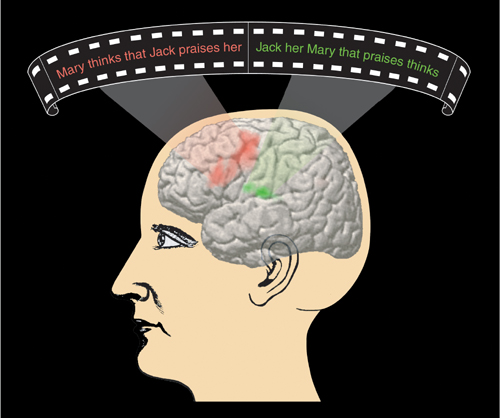

It is a considerable challenge in cognitive neuroscience to prove that human's language ability is special and distinct from other general cognitive abilities such as learning and memory. In the August 1 issue of Neuron, HFSP Young Investigator Kuniyoshi L. Sakai and colleague reported the first direct evidence that the human brain is indeed specialized in sentence comprehension. By using functional magnetic resonance imaging, they directly compared cortical activation in syntactic decision tasks with activation in short-term memory tasks for sentences or word lists. Shown below is an activation map of a standard brain, which is superimposed on a drawing of the early 1800s used in phrenology. They found that two regions in the left prefrontal cortex (red) showed selective activation for syntactic processing: the dorsal prefrontal cortex (DPFC) and the inferior frontal gyrus (IFG). Moreover, the left DPFC showed more prominent activation under the short-term memory task for sentences than that for word lists, which cannot be explained by general cognitive factors such as task difficulty and verbal short-term memory. In contrast, the fronto-parietal regions (green) are recruited under the short-term memory task for word lists. These results provide direct support for the proposal of specialized systems for sentence comprehension in the left prefrontal cortex

Reference: Hashimoto, R. and Sakai, K. L. "Specialization in the
left prefrontal cortex for sentence comprehension."
Neuron, 35, 589-597
(2002).